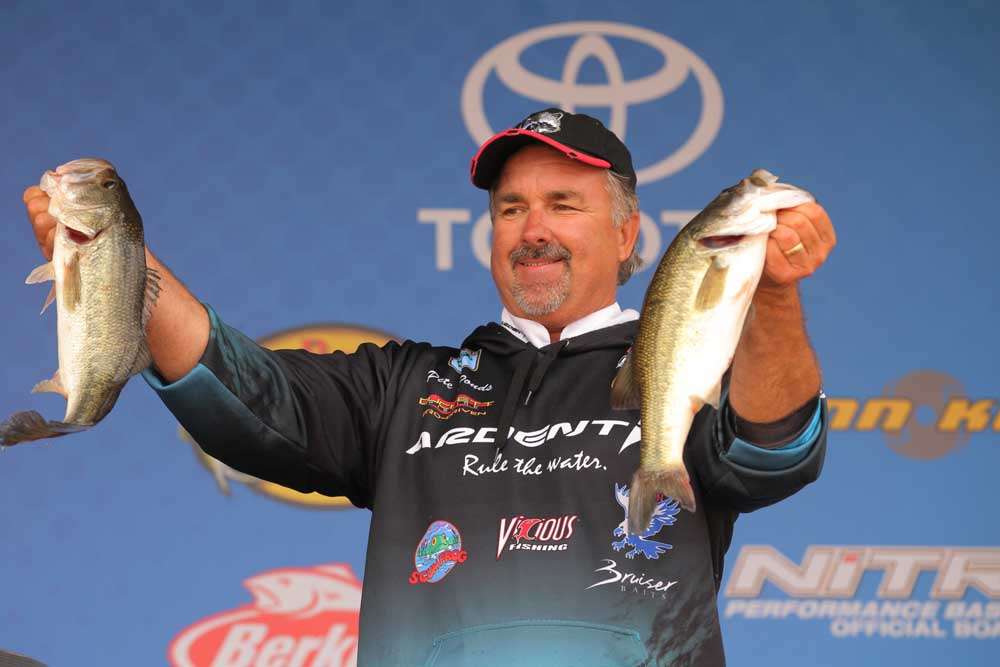
There are few things in bass fishing that are more frustrating than seeing bass schooling and feeding, but not being able to catch them. It's especially common in the fall, when every cove and pocket seems to have pods and pods of shad and the occasional bass busting the surface to eat them.
These are loose schools and scattered fish. The surface action is random and isolated, but you know the bass are there because one will come up and bust shad every so often.
My favorite technique for catching these fish starts with my electronics. I turn on my Humminbird 998 and start looking for bass that are suspending under shad. The pods of baitfish may seem to be everywhere, but the bass are not. I wait until I see them on my sonar unit and know I'm in the right area before I start fishing.
When I know I'm around fish and see the occasional bass surfacing to feed, I break out my favorite fall crankbait — the Bandit Flat Maxx — in a natural shad pattern. I like to throw it on a Duckett Fishing White Ice Pete Ponds Pro Series Model casting rod that's 7 feet, 1 inch long and has a medium action. I throw it with a medium speed (6.3:1) reel and 12-pound-test Vicious monofilament (not fluorocarbon). I like mono because it floats, and I want my bait to ride high in the water.
Long casts are important because the water is usually pretty clear, and the fish can be spooky. The most important thing, though, is the retrieve. You want to crank the bait slow and steady, just waking it back to the boat. Most anglers will overwork the bait, twitching it and making it look too active.
That's a mistake. You want your bait to look like an injured shad swimming slowly near the surface. The fact that the bait is moving slowly and is isolated from the pods of shad makes it an ideal target for a bass.
When one hits, just sweep the hooks into him and start reeling. The medium action rod is perfect for this technique and helps to let the bass get the bait deep. It also helps you keep them hooked up even if they jump and thrash a lot.
This is not a method that's going to load the boat quickly, but when the bass are popping up here and there underneath schools of fall shad, it really works.





